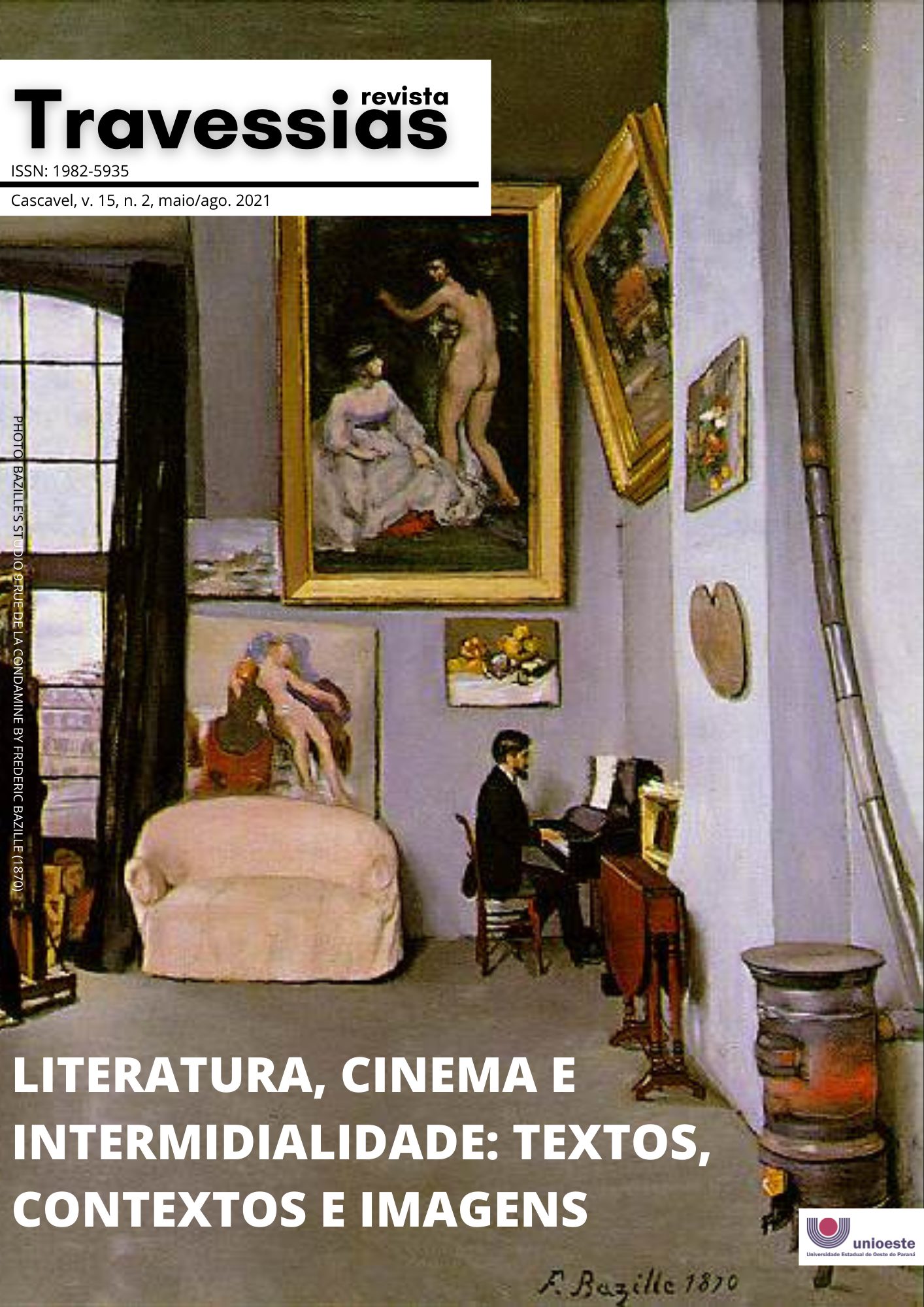Os signos do realismo: da literatura ao cinema, de Flaubert às imagens digitais
DOI:
https://doi.org/10.48075/rt.v15i2.27774Palavras-chave:
Realismo, crise da representação, narrativa, estética.Resumo
Este trabalho propõe uma reflexão teórica sobre o conceito de realismo na literatura e no cinema, estabelecendo conexões entre os dois campos artísticos. Para isso, resgata formulações teóricas clássicas e propõe sua revisão a partir da leitura de pensadores contemporâneos, apontando para o cenário atual de crise da representação nas artes. Para Roland Barthes, a estética do romance realista encarnaria um novo verossímil, fruto de uma fusão entre o referente e o significante, de modo a produzir um “efeito do real”. Para André Bazin, a imagem cinematográfica seria capaz de operar a “epifania do real”, levando o desejo de representação realista a seu limite. As posições destes autores foram bastante criticadas por teóricos como Rancière, Grodal e Carroll, que apontaram suas deficiências e incompletudes. Para Wood, o realismo é um parâmetro avaliativo para toda arte narrativa, que se constrói a partir de uma dinâmica de aproximação e afastamento com a realidade. No cenário atual, o problema da representação coloca em xeque o valor de verdade das formas de representação, o que se materializa no sentimento de ceticismo exacerbado que caracteriza o contexto da pós-verdade. As imagens cinematográficas perderam seu estatuto de veridicidade material, uma vez que o filme não tem mais um suporte físico, enquanto a literatura mistura fato e ficção em exercícios de autoficção. Qual seria a estética realista possível para nosso tempo?
Downloads
Referências
BARTHES, Roland (1968). O efeito de real. In: MENDONÇA, Sérgio Antônio; NEVES, Luiz Felipe Baeta (org.) Literatura e Semiologia – pesquisas semiológicas. Petrópolis: Editora Vozes, 1972.
BAZIN, André (1945-46). O Cinema – ensaios. São Paulo: Editora Brasiliense, 1991.
BAZIN, André. O Realismo Impossível. Edição Kindle: Autêntica, 2016.
BRESSON, Robert. Notes on cintematography. New York: Urizen Books, 1977.
CARROLL, Nöel. From Real to Reel: Entangled in Nonfiction Film. Philosophic Exchange, v. 14, n. 1, 1983.
CARROLL, Nöel (1997). Ficção, não-ficção e o cinema da asserção pressuposta: uma análise conceitual. In: RAMOS, Fernão Pessoa (org.). Teoria Contemporânea do Cinema – documentário e narratividade ficcional. São Paulo: Editora Senac, 2005. v. 2.
D’ONOFRIO, Salvatore. Literatura Ocidental – autores e obras fundamentais. São Paulo: Editora Ática, 2004.
FELINTO, Erick. Cinema e tecnologias digitais. In: MASCARELLO, Fernando (org.). História do Cinema Mundial. Campinas: Papirus Editora, 2006.
GRODAL, Torben. The experience of realism in audiovisual representation. In: Realism and ‘reality’ in film and media. Museum Tuscalunum Press, p. 67-91, 2002.
LEFEBVRE, Martin; FURSTENAU, Marc. Digital editing and Montage: the Vanishing Celluloid and beyond. Cinémas / Revue d’études cinématographiques, v. 13, n. 1-2, p. 69-107, 2002.
MACHADO, Arlindo. Pré-cinemas & pós-cinemas. São Paulo: Papirus, 2013.
MANOVICH, Lev. The language of new media. Massachusetts: MIT Press, 2002.
MANOVICH, Lev. What is digital cinema? [S.n.: S.l.], (1995) Disponível em http://manovich.net/index.php/projects/what-is-digital-cinema. Acesso: 15 mar. 2021.
METZ, Christian. A respeito da impressão de realidade no cinema. In: METZ, Christian. A Significação no Cinema. São Paulo: Perspectiva, 1977.
PARENTE, André. Cinema e tecnologia digital. Lumina, Juiz de Fora, v. 2, n. 1, p. 1-17, jan./jun. 1999.
RANCIÈRE, Jacques (2010). O efeito de realidade e a política da ficção. Tradução: Carolina Santos. Novos Estudos CEBRAP, São Paulo, n. 86, p. 75-90. mar. 2020.
SCHWARTZ, Christian. Gênese autobiográfica da ficção. Curitiba: Biblioteca Pública do Paraná, Jornal Cândido, no. 09, abril de 2012.
WOOD, James. A coisa mais próxima da vida. SESI-SP Editora. Edição do Kindle, 2017.
WOOD, James. The Broken Estate: Essays on Literature and Belief (Modern Library Paperbacks), 1999.
WOODFIELD, Richard. The Reality Effect – an alternative account. Published originally in the Polish Philosophy Journal - Dialectics and Humanism, edited by Harold Osborne, 1989. Disponível em: https://www.academia.edu/222169/Richard_Woodfield_The_Reality_Effect_An_alternative_account. Acesso em: 10 fev. 2020.
WATT, Ian. The rise of the novel. London: Pimlico, 2000.
Downloads
Publicado
Como Citar
Edição
Seção
Licença
Aviso de Direito Autoral Creative Commons
Política para Periódicos de Acesso Livre
Autores que publicam nesta revista concordam com os seguintes termos:
1. Autores mantêm os direitos autorais e concedem à revista o direito de primeira publicação, com o trabalho simultaneamente licenciado sob a Licença Creative Commons Attribution que permite o compartilhamento do trabalho com reconhecimento da autoria e publicação inicial nesta revista.
2. Autores têm autorização para assumir contratos adicionais separadamente, para distribuição não-exclusiva da versão do trabalho publicada nesta revista (ex.: publicar em repositório institucional ou como capítulo de livro), com reconhecimento de autoria e publicação inicial nesta revista.
3. Autores têm permissão e são estimulados a publicar e distribuir seu trabalho online (ex.: em repositórios institucionais ou na sua página pessoal) a qualquer ponto antes ou durante o processo editorial, já que isso pode gerar alterações produtivas, bem como aumentar o impacto e a citação do trabalho publicado (Veja O Efeito do Acesso Livre).
Licença Creative Commons
Esta obra está licenciada com uma Licença Creative Commons Atribuição-NãoComercial-CompartilhaIgual 4.0 Internacional, o que permite compartilhar, copiar, distribuir, exibir, reproduzir, a totalidade ou partes desde que não tenha objetivo comercial e sejam citados os autores e a fonte.



